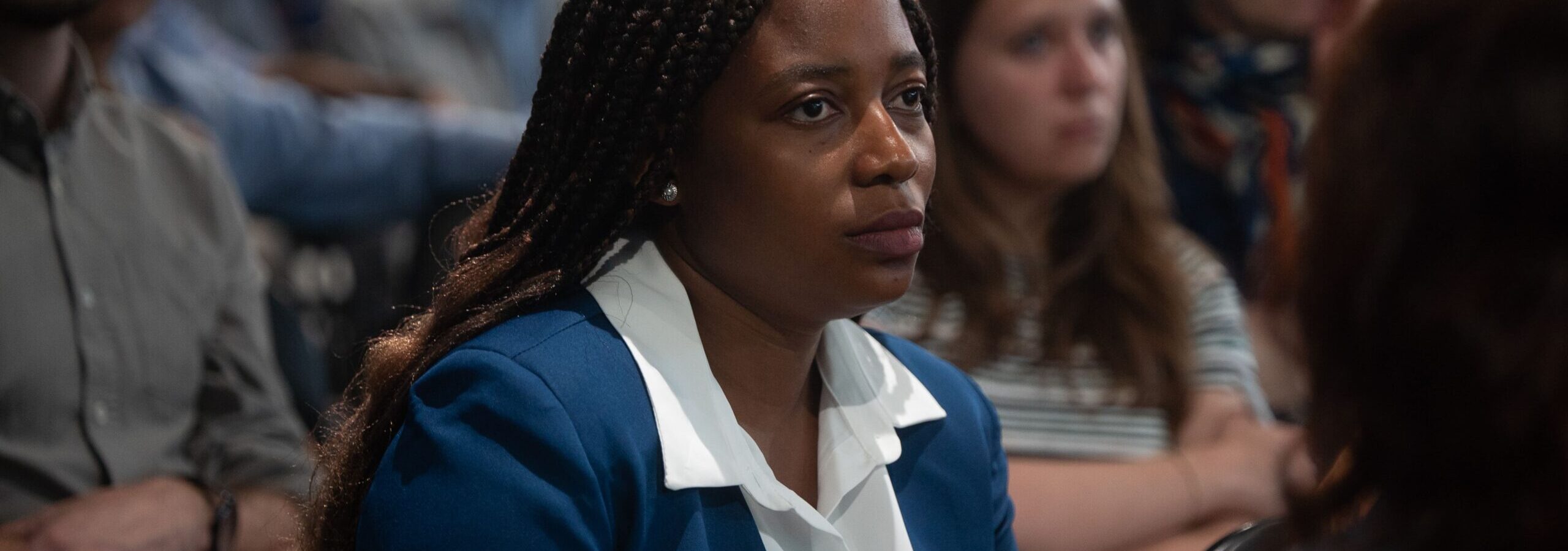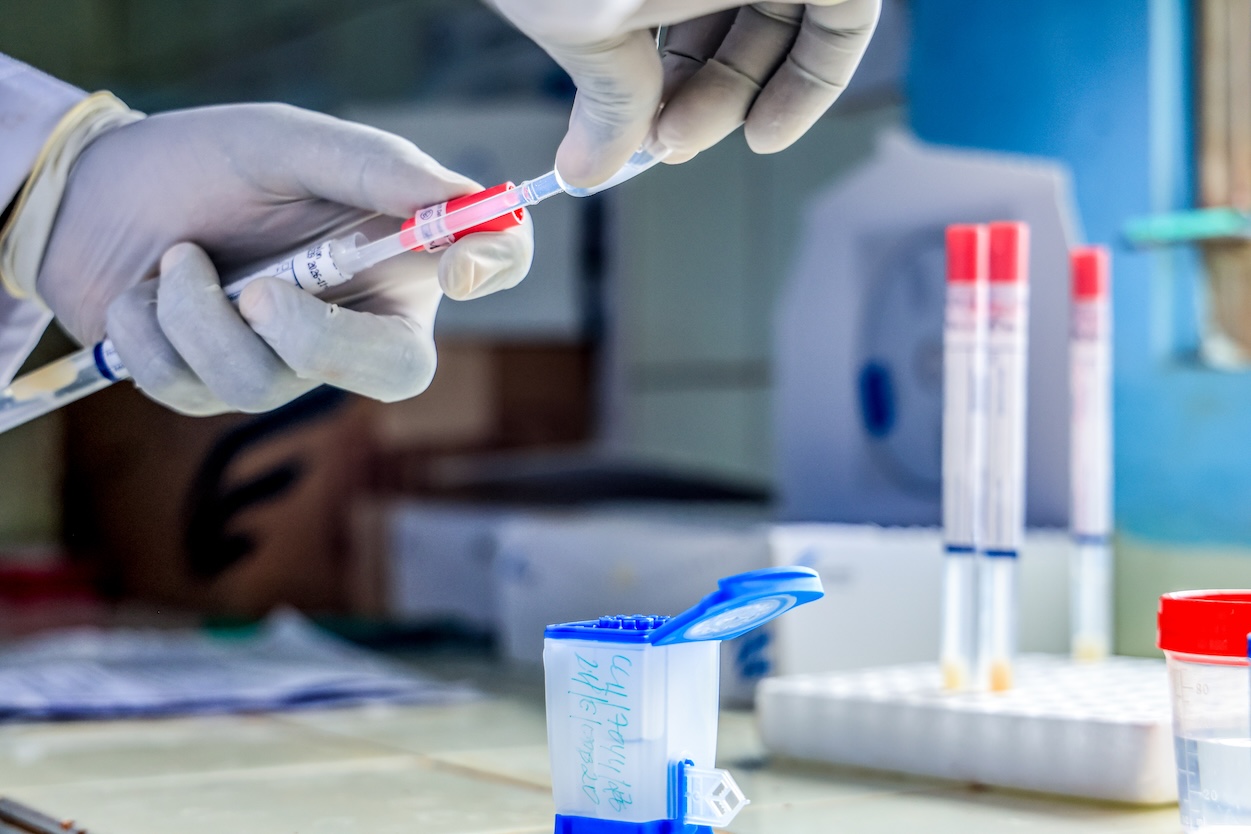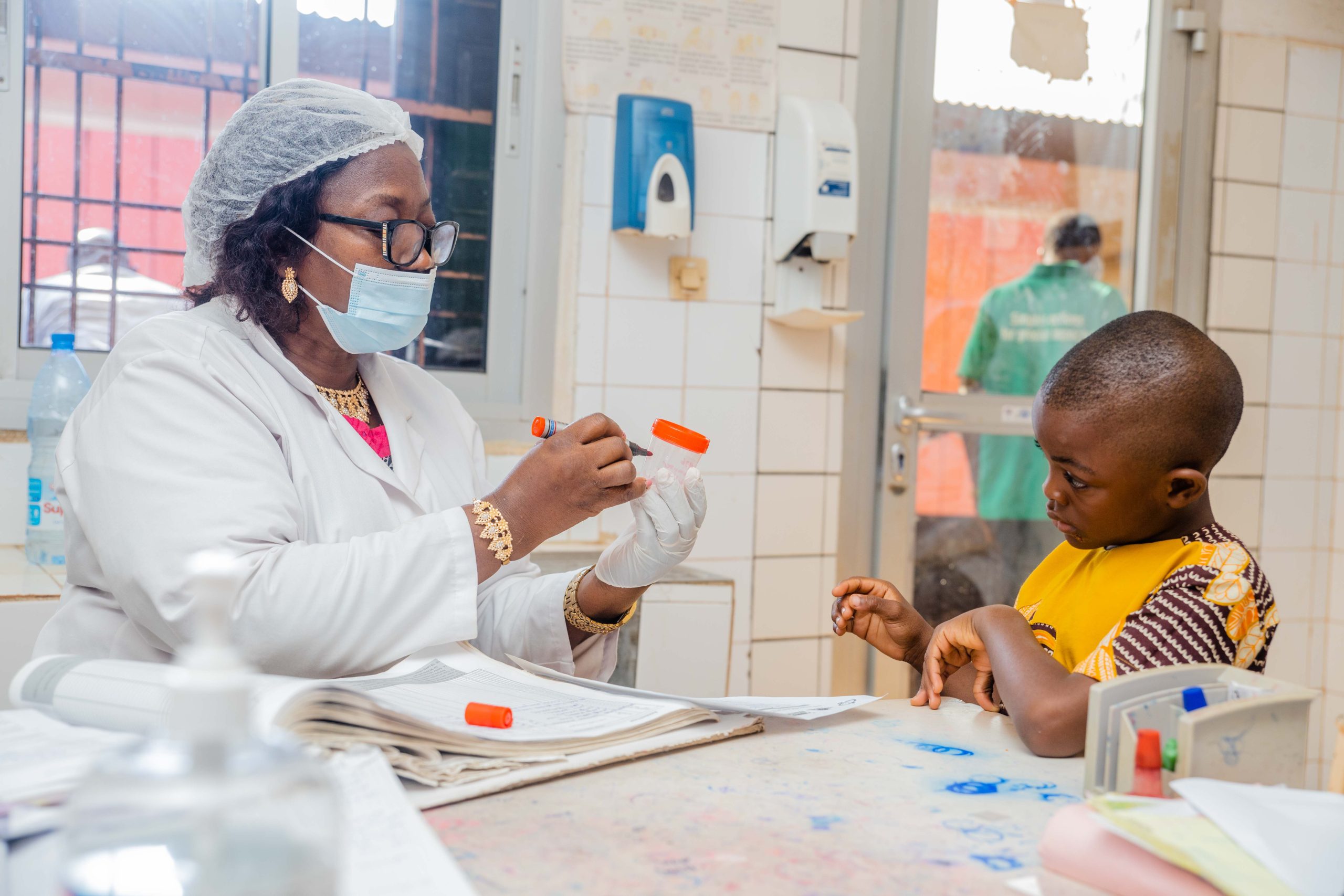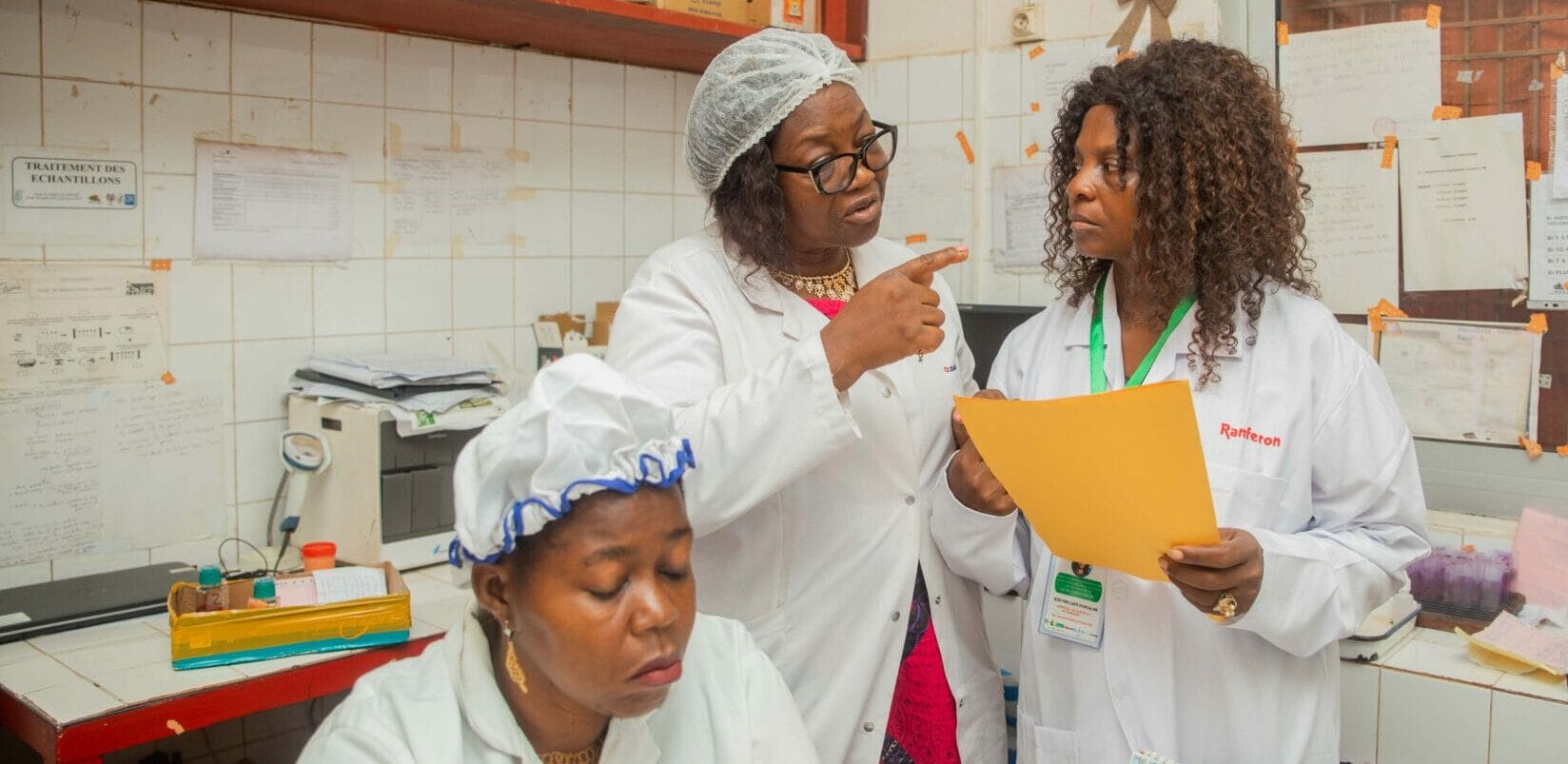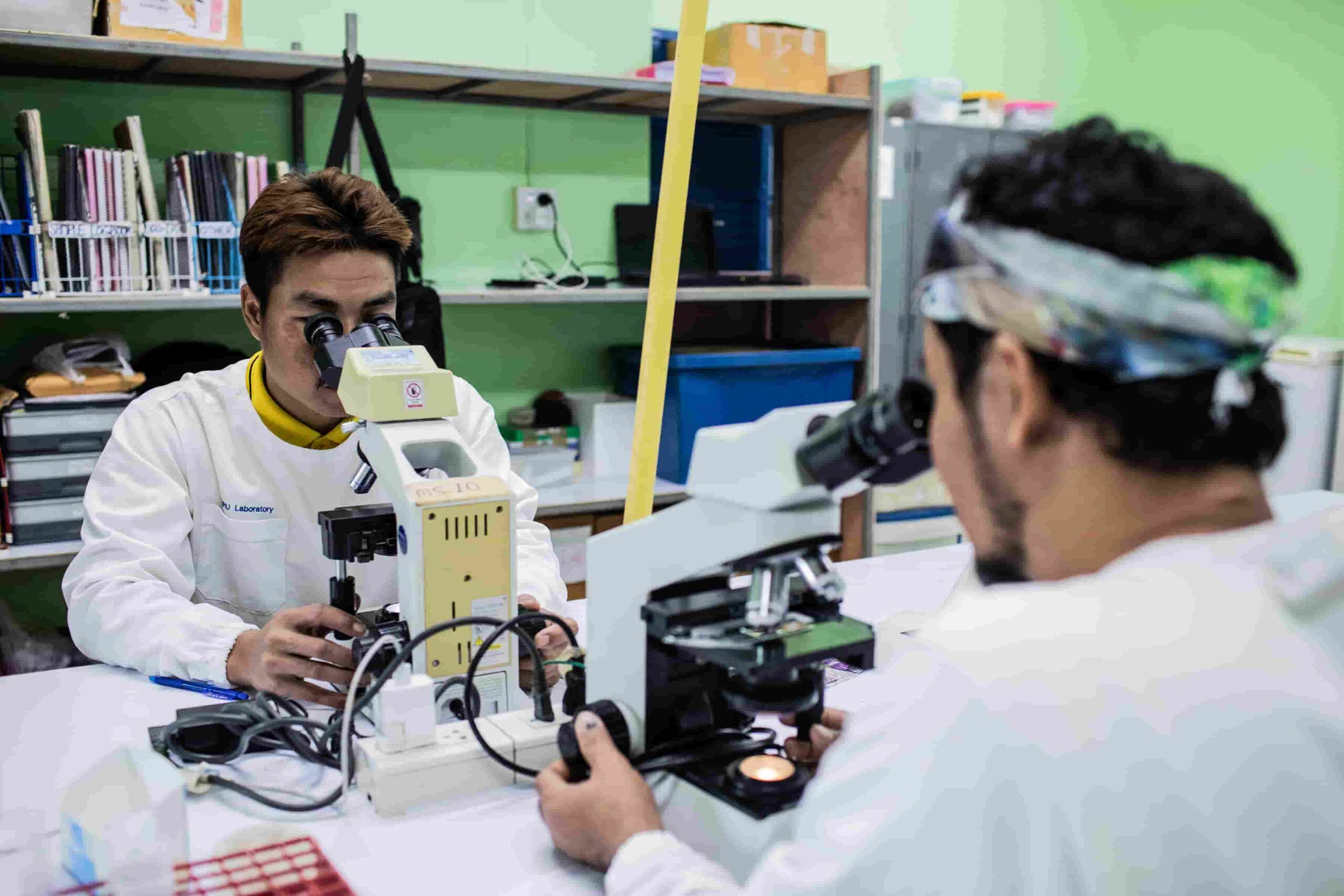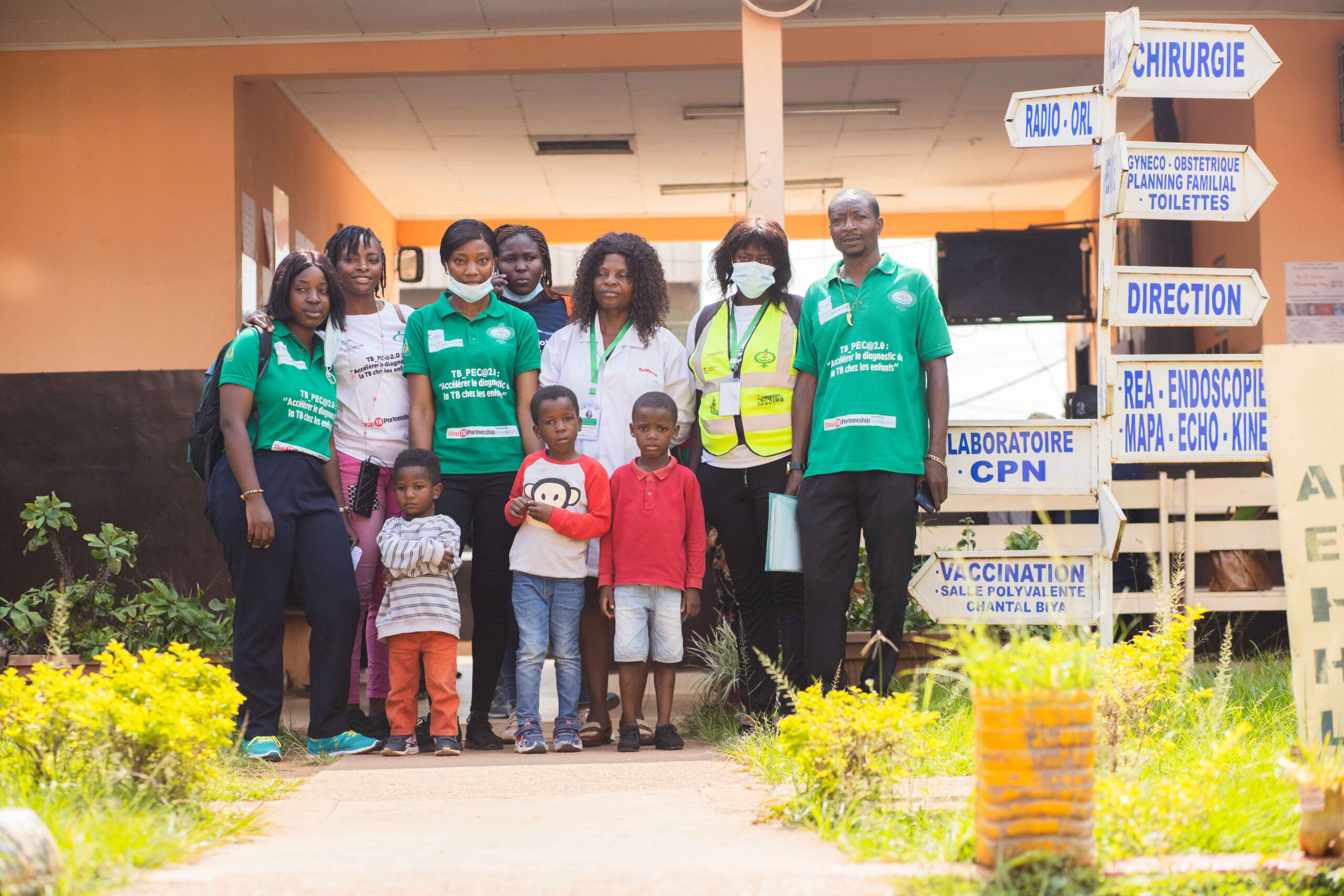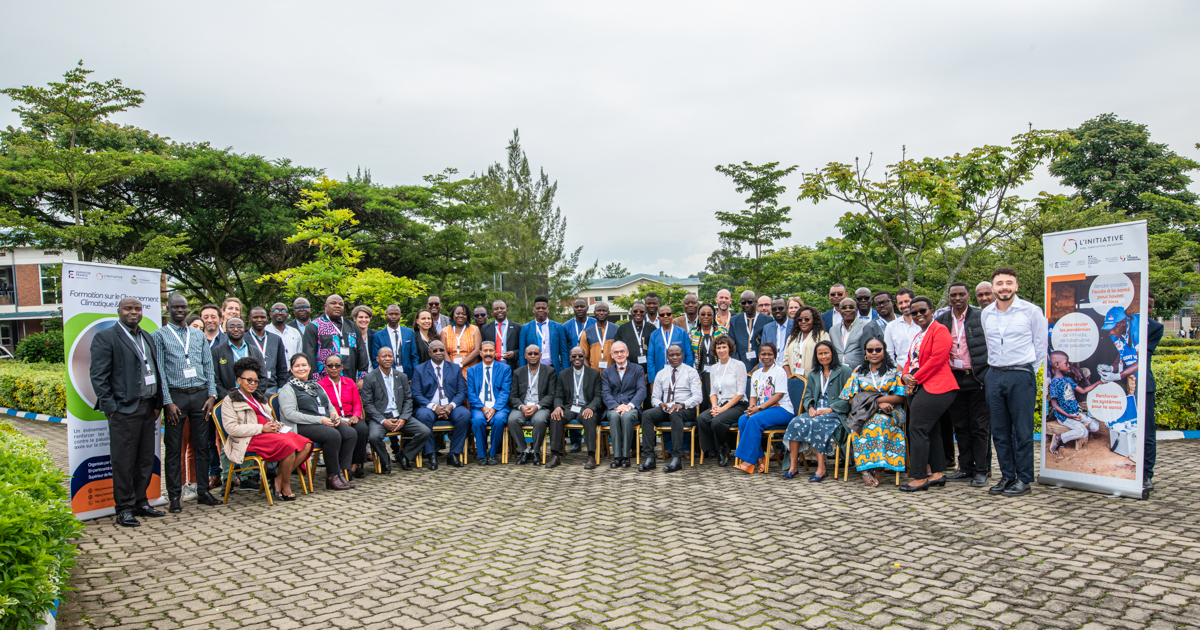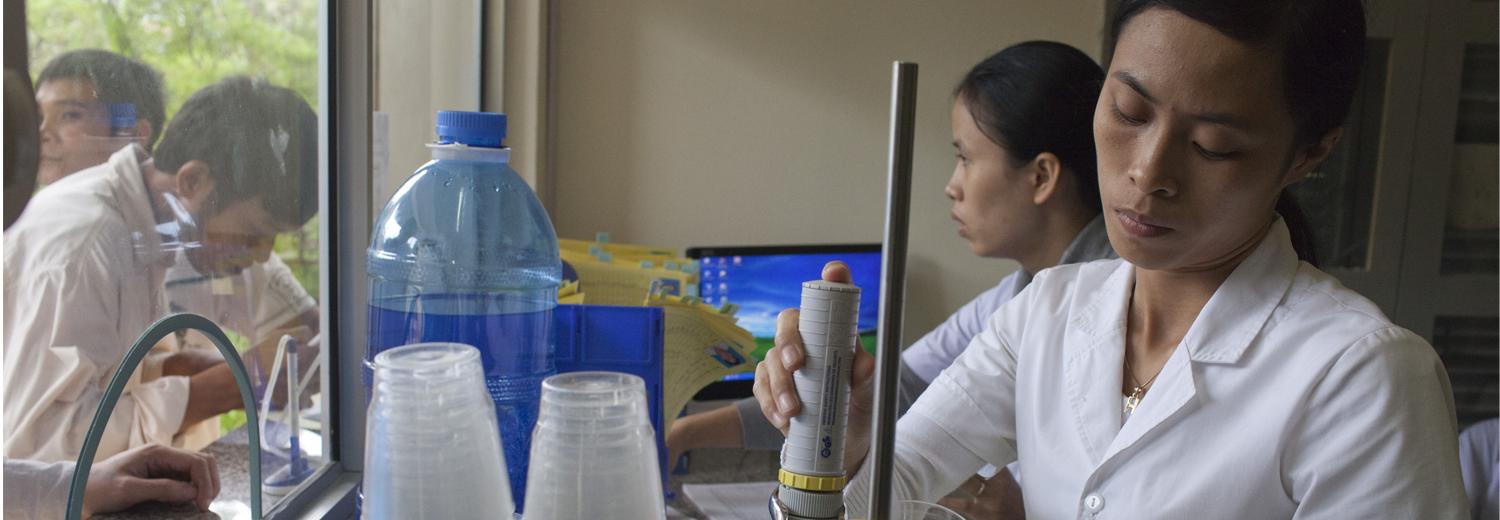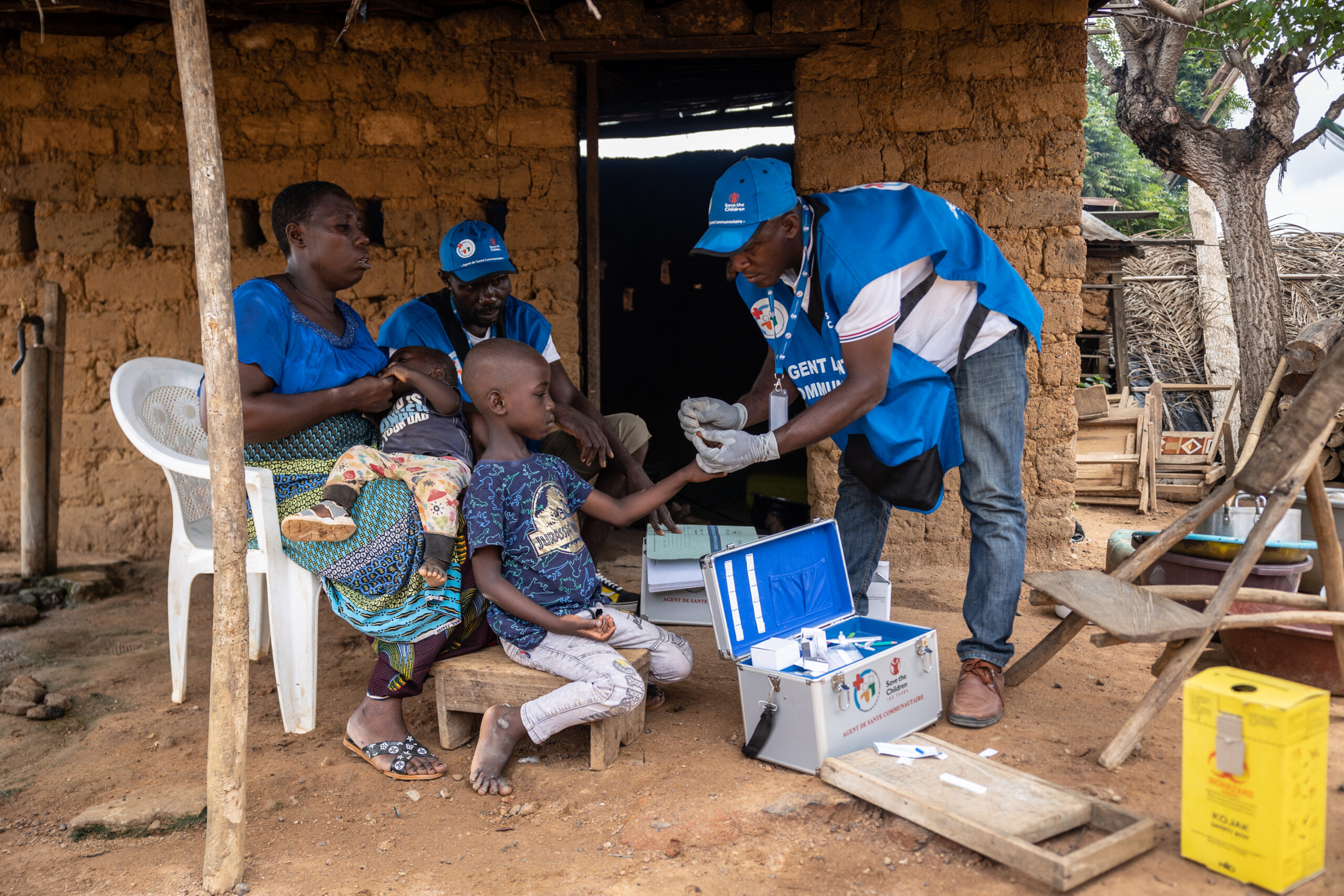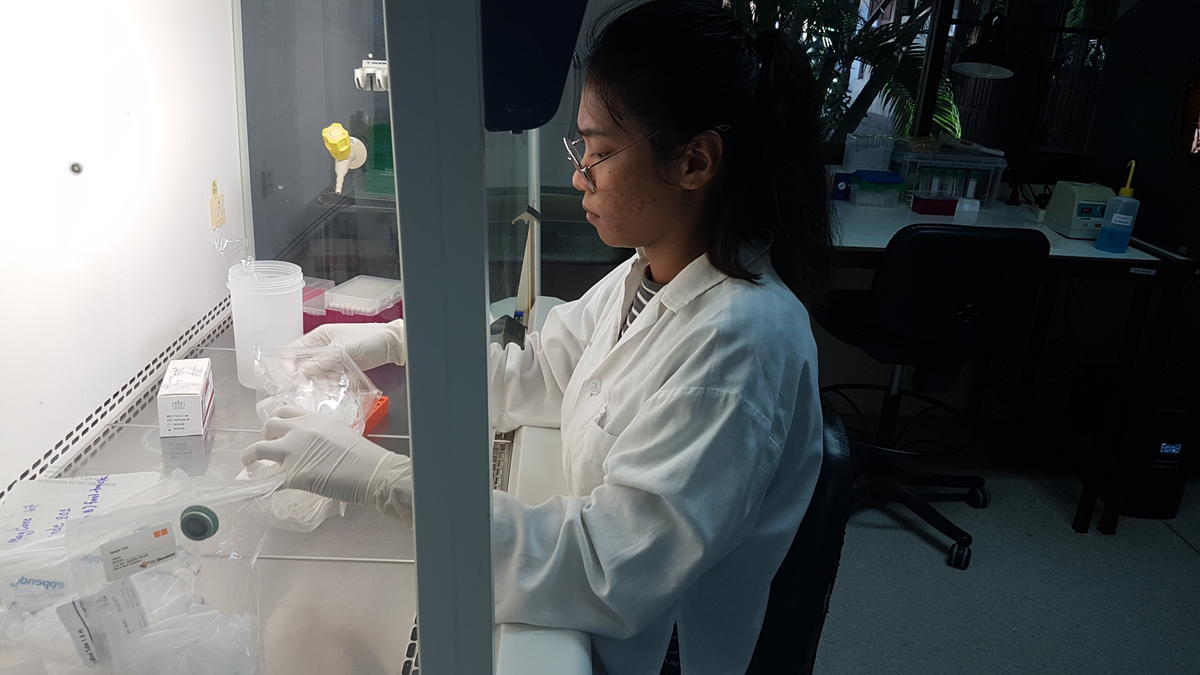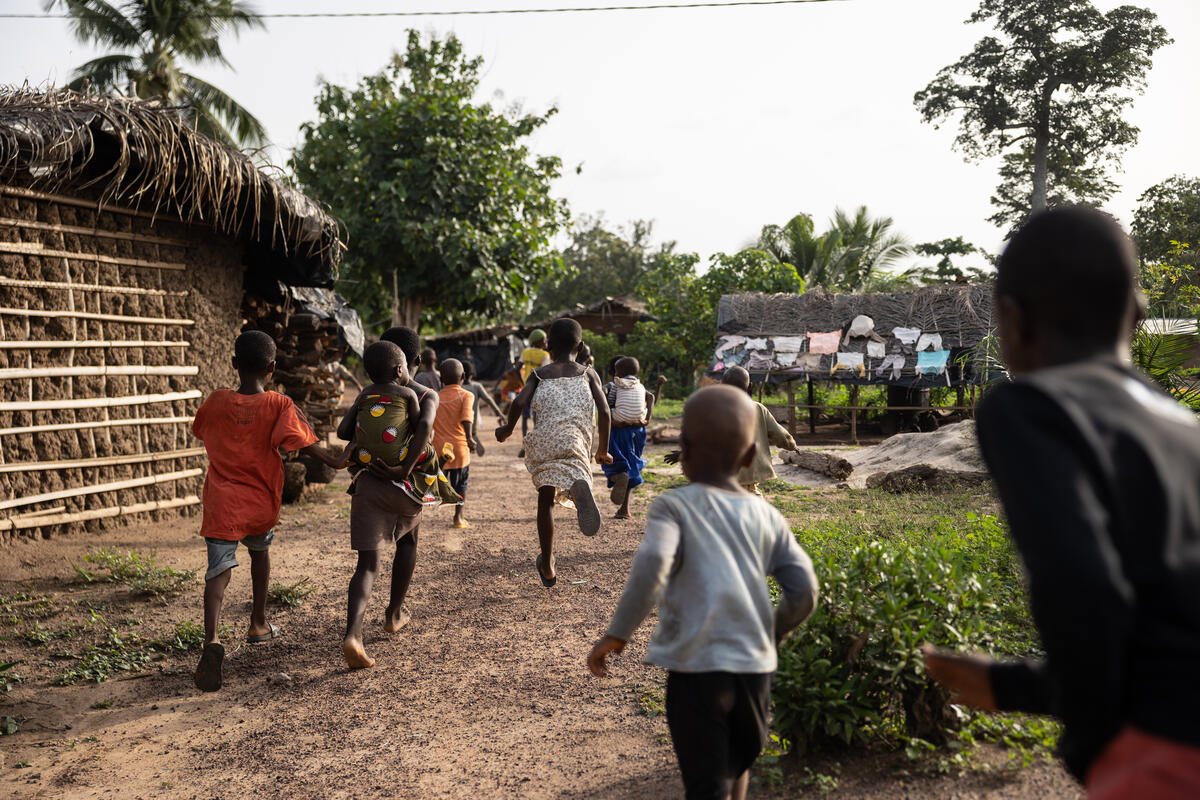A look back at the first scientific day of L’Initiative
A look back at the first scientific day of L’Initiative, which was held on June 5, 2023 in front of an audience of around 100 people and which was dedicated to the themes of children facing the HIV, tuberculosis (TB) and malaria pandemics. In this section, you can access the slides and a summary of the different presentations.
The biological, immune and physiological particularities of children facing TB
Professor Jean Gody, Director of the Bangui Pediatric Hospital (Central African Republic) wanted to remind us in his introduction how the biological vulnerabilities of children are directly linked to their growth, to the functional acquisitions of the development of their organs. He placed emphasis on the acquisition of immunity which, when hindered, jeopardizes the integrity of the child: the first 1000 days of the child remain a key moment for the development of the child and his health.
Specific needs for each disease
These biological particularities also translate into the need to develop adapted health products. The morning provided an opportunity to reflect on the obstacles other than technological and economic ones that delay the availability of these same products to accelerate the identification and treatment of children affected by tuberculosis. Bringing together four guests and hosted by Florence Thune, CEO of Sidaction, a first round table recalled the main challenges in the fields of TB, malaria and HIV. With regard to pediatric TB, the main challenge remains diagnosis: in fact, 96% of children who die from TB have not been diagnosed. The difficulties in detecting tuberculosis in children are linked not only to the paucibacillary nature of the disease and the consequent low sensitivity of microbiological tests but also to the difficulties in collecting respiratory samples (sputum) from the youngest. New molecular techniques, based on samples less invasive than sputum (nasopharyngeal aspirates, stools) open up new perspectives, but in fact radiological and clinical diagnosis remains the main diagnostic method in primary health centers.
Tuberculosis, a disease that remains difficult to diagnose
In a presentation of the results of TB-SPEED, a research project co-funded by L’Initiative and Unitaid, of which he was the principal investigator, Dr Olivier Marcy, Director of Research at the University of Bordeaux, recalled that expectations regarding the diagnosis of pediatric TB are enormous, and that the challenge of diagnosis must be considered with that of its decentralization, which is certainly recommended by the WHO but which lacks evidence. The decentralization implemented in the TB-SPEED project has tripled the number of cases detected. The project has also outlined avenues for improving the diagnosis of TB in vulnerable children such as those with severe pneumonia, severe acute malnutrition and/or living with HIV. Indeed, it has not only demonstrated the feasibility, in these specific groups, of new molecular approaches on alternative samples (nasopharyngeal aspirates, stools) but also enabled the validation of specific diagnostic algorithms, which can contribute to increasing case detection.
Access to X-rays, another key component of TB diagnosis, also remains very difficult in the field. According to Dr. Maud Berset, technical advisor at the Elizabeth Glaser Pediatric AIDS Foundation, this is mainly due to the cost of travel to centers that have this equipment and the low number of radiologists and TB experts able to interpret X-rays. However, the development of portable digital X-ray devices and computerized X-ray interpretation systems should open up new opportunities in terms of decentralization of diagnosis.
The treatment of children infected with tuberculosis also presents specific challenges, there is still a lack of data for short treatment regimens in children and a lack of a pediatric formulation for Rifapentine. Finally, although there are 16 vaccines under development to complement the tuberculosis vaccine (BCG) which only protects very young children from severe forms, none of the trials under development have a clinical program in children!
Malaria: tools that need to be deployed more effectively in the field
Malaria also presents specific challenges, which were notably recalled by Dr. André-Marie Thcouatieu, Director of the “Access and Product Management” department at Medicines Malaria Venture. He notably highlighted the problem of the acceptability of mosquito nets which, even when they are well distributed, can come up against obstacles such as an unsuitable design or a color that will be used less than another. The obstacles to seasonal chemoprophylaxis (SPC) were also mentioned, and in particular the fact that it must be given to children during the peak agricultural season, i.e. when parents are less available.
It is precisely to increase the effectiveness of CPS that Dr. Paul Sondo, a researcher at the Nanoro Health Sciences Research Institute (Burkina Faso), initiated the SMC-RST ( seasonal malaria chemoprevention ) research. His initial hypothesis is that the family home represents a reservoir of parasites, from which mosquitoes continue to feed and transmit the disease, thus compromising the effectiveness of CPS. As part of his project supported by L’Initiative, Dr. Sondo is testing his hypothesis by testing and treating all members of the family of the child placed under CPS, including asymptomatic members, in order to dry up the reservoir and cut the transmission dynamics. The initial results are very encouraging and confirm that CPS has not said its last word.
HIV, a disease with disparate issues at different stages of life
Paediatric HIV was also discussed at length, with the major issue of paediatric formulations in particular : without an adapted formulation (in terms of dosage, texture and taste), antiretrovirals (ARVs) may not be accepted by children. Dr Janice Lee, pharmacist in charge of access issues at the DNDi (Drugs for Neglected Diseases initiative), presented the challenges linked to the introduction of the “4 in 1”, a formulation which has the advantage of being able to be consumed with any food or drink. The “4 in 1” complements paediatric dolutegravir, but the positioning of this combination in 2nd or 3rd line generates other challenges such as low order volumes and therefore availability on the markets. David Maman, HIV advisor to the Global Fund, recalled that the transition to pediatric dolutegravir, which is now widely distributed, was one of the fastest in history: by the end of 2023, all countries in West and Central Africa will have completed their transition to pediatric dolutegravir .
All the stakeholders who discussed, presented, and debated on June 5 agreed that it is necessary to address these pediatric diseases by combining several approaches and aspects, whether it is nutrition, co-infection, or the role of the family environment. Moreover, it is multiple approaches, combined and co-constructed from the needs of children and adolescents that make the dedicated programs implemented in Senegal successful. Since 2000 and the start of ARV availability in Senegal, the CRCF and its partners have conducted intervention projects with the aim of optimizing and integrating clinical and psychosocial care in Senegal. Dr. Aminata Diack, pediatrician at the Albert Royer National Children’s Hospital in Dakar, and Cécile Cames, epidemiologist at the Institut de recherche pour le développement (IRD), shared the developments in these programs and highlighted the major successes of setting up an early warning system, the transition in care from the pediatric to the adult department, improving the “care cascade” and virological suppression, monitoring and nutritional diagnosis. Among the major challenges that remain, they both mentioned taking mental health into account .
Dr. Géres Ahognon and Caroline Yonaba, respectively Executive Director and Focal Point of the pediatric network “Children and HIV in Africa” (EVA) also recalled what remains to be accomplished, in particular to achieve a real transition from pediatrics to adult care for adolescents living with HIV in Africa. They presented the main lessons learned from the TRANSTION project supported by L’Initiative and Sidaction, highlighting the mental health issues faced by children and adolescents, which can lead to the isolation of young patients, or even the refusal of care. All the pioneering work accomplished by the EVA network demonstrates that only care systems designed and conceived by and for communities can achieve satisfactory results.
Advocacy for the community approach, to respond to needs as close as possible to the ground
During the panel on the community approach to improving child health, Dr. Nuccia Saleri, consultant to the Global Fund, renewed her encouragement to invest in the field of tuberculosis with community approaches for children, in order to facilitate the announcement, compliance with treatment and strengthen psychological support, particularly due to strong stigma
. The mobilization of young people with national programs, on subjects that concern them such as monitoring the active file, stigma and depression, and with their peers to increase their knowledge on issues relating to sexual and reproductive rights and health (SRHR) must not weaken and the ambassador of the GRANDIR network Dieudonné Awolokou-F was there to remind the audience of this. On the sometimes delicate subject of sexuality, Dr. Mahamadou Balarabe, Head of Sexual and Reproductive Health Services for Solthis in Niger, presented the JADES project, which is precisely intended to empower young people and strengthen sexual health services. Penda Toure, Executive Director of the “Solidarity Action Social Center” in Bouaké, Ivory Coast, and Christine Kafando, President of the NGO “Espoir pour demain” in Burkina Faso also recalled the importance of strengthening the family approach to improve screening, reporting and treatment monitoring among children and young people. Finally, the panelists around Dr. Rachel Ndaya, doctor at the Network of Congolese Youth Associations (RACOJ) recalled that advocacy must be intensified to promote screening and access to care for young people, and that parental consent too often remains a barrier in many countries, as illustrated below by UNAIDS data.
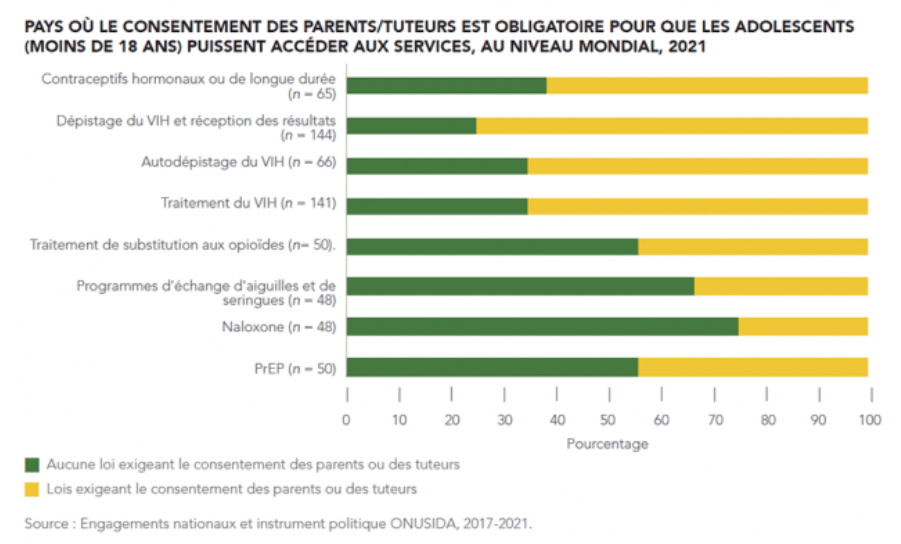
Putting children and adolescents at the center, in their diversity
The theme of adolescents and their growing interaction with the world around them is evocative of the diversity of children and childhoods.
During this scientific day, the diversity of children and their expectations were often highlighted to illustrate today’s challenges in their fight against pandemics. Dr. Hélène Kane, during a presentation entitled “Diversity of children and their experience of illness in West Africa”, reminded us that we are witnessing a change in parenting but also in “infancy”. While children are often seen as “victims” of the disease, anthropological observations clearly show that these children are actors in their illness , regardless of their age. They develop personal strategies, choose the people they can trust, and build their own path to face the many challenges of care. Dr. Kane noted that children often express the feeling of being subjected to care (results of the ENSPEDIA program). She therefore stressed the importance of explaining the disease to reduce children’s fears and support the management of chronic diseases. In fact, we need to enable children to better manage their illness, knowing that children draw on different registers of knowledge to understand their illness.
